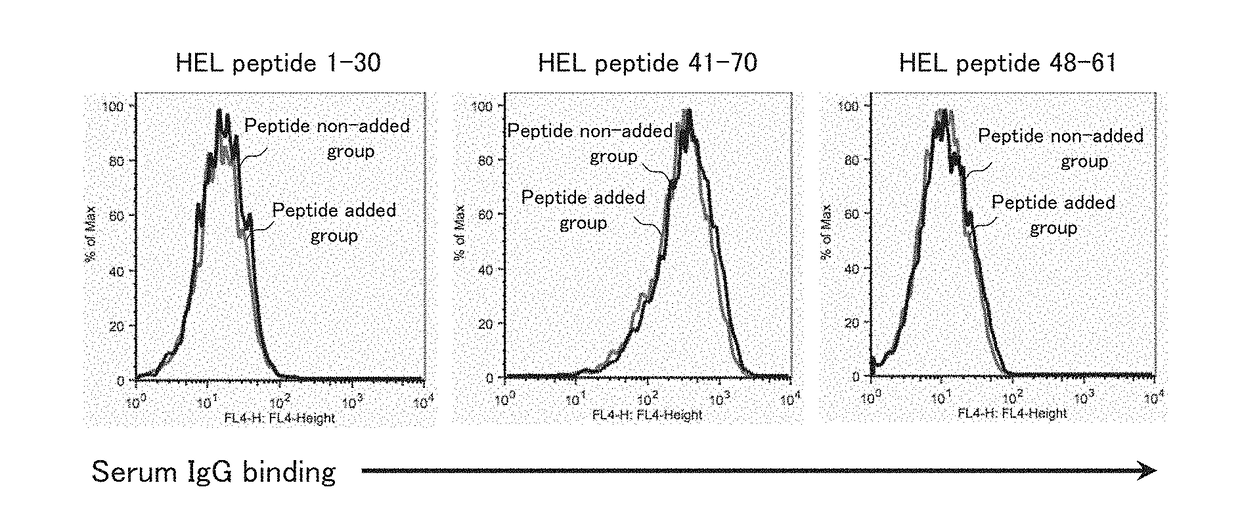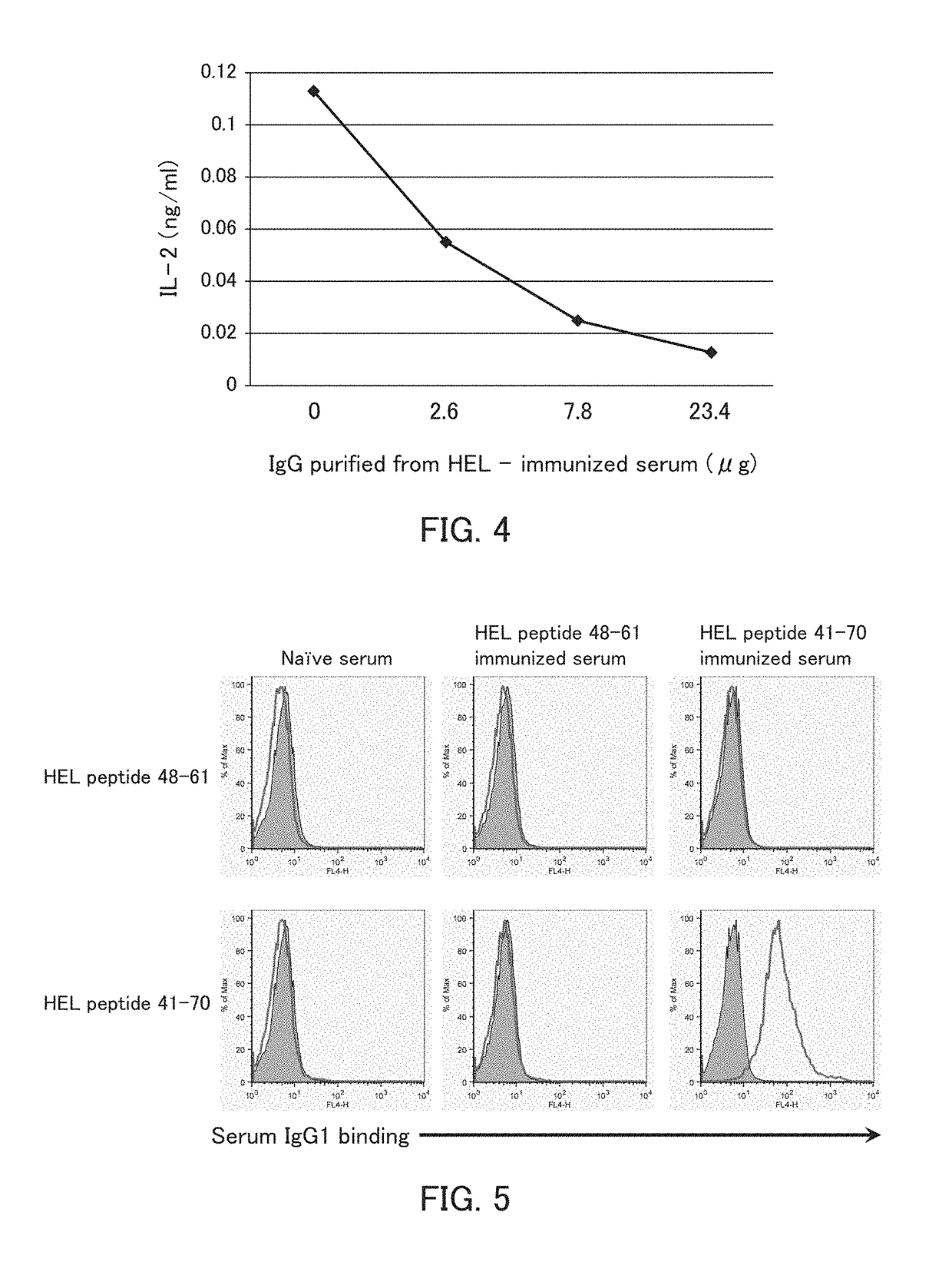Immunizing peptide, method for producing immunizing peptide, pharmaceutical composition for immune disease containing same, and method for treating immune disease
a technology of immunizing peptide and immunizing peptide, which is applied in the direction of immunological disorders, antibody medical ingredients, peptide sources, etc., can solve the problems of difficult acquisition of antibody and use of antibody in treatmen
- Summary
- Abstract
- Description
- Claims
- Application Information
AI Technical Summary
Benefits of technology
Problems solved by technology
Method used
Image
Examples
example 1
[0117]The present example examined whether immunization with an HEL protein induces production of an antibody to a complex of a peptide longer than a T-cell epitope in the HEL protein and an MHC class II molecule of a living organism and whether the antibody inhibits the binding of a TCR that recognizes a T-cell epitope-MHC class II molecule complex.
example 1a
[0118]The present example examined whether immunization with an HEL protein induces production of an antibody to a complex of a peptide longer than a T-cell epitope in the HEL protein and an MHC class II molecule of a living organism.
[0119](1) Preparation of HEL Peptide-Presenting Cells
[0120]From mouse spleen cDNA, polynucleotides encoding the α-chain and the β-chain of a mouse MHC class II molecule (I-Ak) shown below were cloned into pME18S vectors, respectively. Thus, a mouse MHC class II molecule (I-Ak) α-chain expression vector (I-Ak α expression vector) and a mouse MHC class II molecule (I-Ak) β-chain expression vector (I-Ak β expression vector) were produced. As a GFP expression vector, pMX-GFP (obtained from the Division of Cellular Therapy in the Advanced Clinical Research Center of the Institute of Medical Science, the University of Tokyo) was used.
α-chain of mouse MHC class II molecule (I-Ak)(SEQ ID NO: 11)ATGCCGCGCAGCAGAGCTCTGATTCTGGGGGTCCTCGCCCTGACCACCATGCTCAGCCTCTGCGGAG...
example 1b
[0130]The present example examined whether the antibody produced in Example 1A inhibits the binding of a TCR that recognizes a T-cell epitope-MHC class II molecule complex to an immunizing peptide-MHC class II molecule complex.
[0131](1) Preparation of Soluble Single-Chain TCR
[0132]From 3A9 T cell hybridomas (obtained from Laboratory of Vaccine Materials, National Institutes of Biomedical Innovation) expressing a TCR that recognizes a complex of a peptide consisting of the amino acid sequence of SEQ ID NO: 1 (the T-cell epitope) and I-Ak (the MHC class II molecule), the TCR was cloned. Specifically, from cDNA derived from the 3A9 T cell hybridomas, a polynucleotide encoding the following α-chain and β-chain of 3A9 TCR linked by a GGGGS linker was cloned into a pME18S vector. Thus, a 3A9 TCR expression vector was produced. The vector was designed so that the Fc domain of human IgG is added to the C terminus of an expressed protein. Thus, by introducing the expression vector to a host,...
PUM
| Property | Measurement | Unit |
|---|---|---|
| concentration | aaaaa | aaaaa |
| concentration | aaaaa | aaaaa |
| pH | aaaaa | aaaaa |
Abstract
Description
Claims
Application Information
 Login to View More
Login to View More - R&D
- Intellectual Property
- Life Sciences
- Materials
- Tech Scout
- Unparalleled Data Quality
- Higher Quality Content
- 60% Fewer Hallucinations
Browse by: Latest US Patents, China's latest patents, Technical Efficacy Thesaurus, Application Domain, Technology Topic, Popular Technical Reports.
© 2025 PatSnap. All rights reserved.Legal|Privacy policy|Modern Slavery Act Transparency Statement|Sitemap|About US| Contact US: help@patsnap.com



